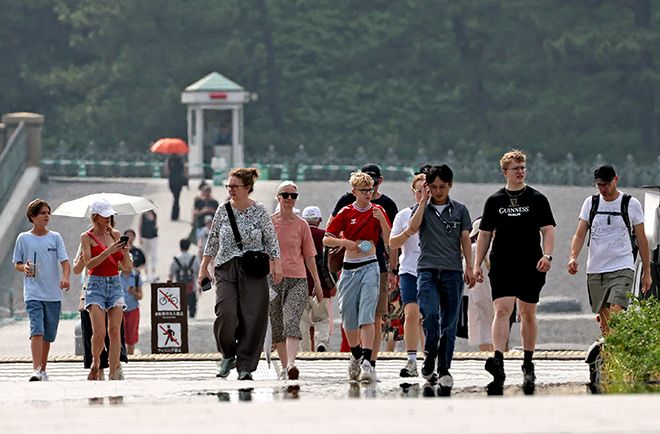Despite the early hour, the mercury was already climbing as the Japan Meteorological Agency reported that 303 of 914 observation posts nationwide recorded temperatures of 30 degrees or higher by 9 a.m. on July 8.
A little past 8:30 a.m., temperatures had already reached 31.7 degrees in Funabashi, Chiba Prefecture; 31.6 degrees in western Tokyo’s Fuchu; and 31.4 degrees in Kobe’s Chuo Ward.
Daytime highs are expected to be particularly sweltering with a high of 36 degrees forecast for Takamatsu and 35 degrees for Tokyo as well as Osaka and Hiroshima prefectures.
The JMA and the Environment Ministry issued heatstroke alerts on July 8 for 28 locations across the country that span Tokachi in Hokkaido to Kumamoto Prefecture. Both urge the public to take proper precautions against heatstroke.
A Pacific high-pressure system blanketed much of the nation on July 7, ushering in what is shaping up to be a brief but intense heat wave.
According to the JMA, central Tokyo hit 35.6 degrees at 11:20 a.m. on July 7, exceeding 35 degrees for the first time this year.
The JMA also foresees the extreme heat lasting until around July 10, especially in the Kyushu and the Kinki regions.
The Pacific high-pressure system is forecast to weaken after July 11 and usher in the reprieve of more cloud cover nationwide. Relatively cooler and cloudier days are expected to continue through around July 14, meaning the rainy season is unlikely to end for the Kanto-Koshin, Hokuriku and Tohoku regions during this period.
“Please continue to take precautions against heatstroke,” a JMA official said. “Be aware of sudden changes in the weather such as thunderstorms or heavy rain, particularly in the afternoon when atmospheric conditions may become unstable.”


AloJapan.com